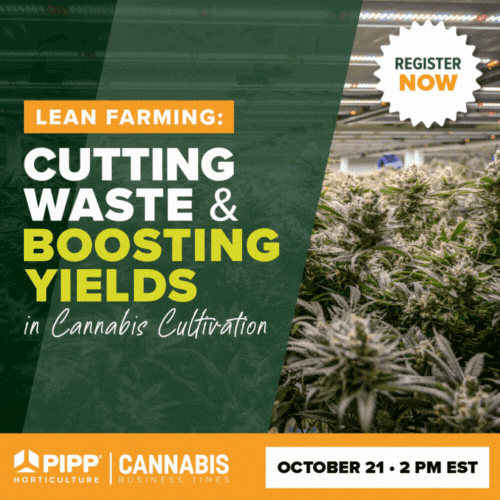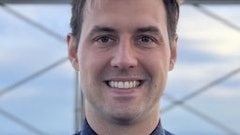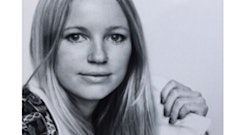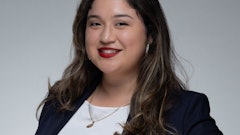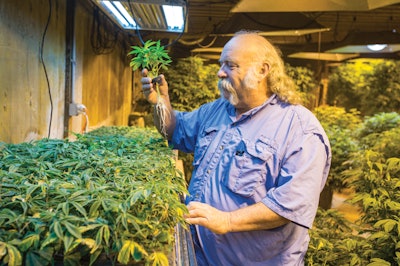
Steve Walser and his wife, Margaret Ann, did what many young adults of the '60s did — they emigrated from city to country to join the "back-to-the-land movement." And like many, they didn’t have a plan for what they would do once they got there. “We’re old hippies, as one might say, and when we got out here so many years ago, we discovered, ‘Hey, you have to make a living while you're here. It's not such an easy thing to do,’” Walser recalls.
Walser’s childhood experience in gardening came in handy, and the couple established a garden, which quickly grew into a couple acres. Little did Walser and his wife know then that that garden, set in a quiet valley in Eastern Washington, would evolve into a large-scale, working organic farm — with thousands of acres under irrigated cultivation — that would eventually include produce, a vineyard and, most recently, a Tier-3 cannabis farm called Buddy Boy Farm.
Part of the Walsers’ success, with both their original organic farm and their cannabis farm, Walser says, is “we were on the early edge of it, and we rode the wave. And we made some good decisions.” Those good decisions led the Walsers to develop a frozen food company, marketing and sales skills that achieved global reach for their produce, and they had the first organic product ever sold in Costco, many years ago, says Walser.
Walser and his wife had just scaled back on many aspects of their business — “we were kind of slowing down and wanting to not be quite as frenetic as we were,” he explains — when the opportunity to expand into cannabis cultivation came along.
Here, Guest Interviewer Eugene Flynn, managing member of Canna Herb Farms LLC, a Tier-2 cultivator in Washington, talks in-depth with Walser about his cannabis upstart, his 40 years of organic farming practices, Buddy Boy Farm’s plans for expansion, his best business decisions and lots more.
Eugene Flynn: You’re a Tier-3 producer. Can you tell us about your total canopy, and mix between indoor and outdoor?
Steve Walser: Our cannabis farm is on a small portion of our existing farm. We've got about … two acres fenced off and under light, cameras and all that. We had a large storage building that we weren't using — about 6,000 square feet — that we were able to convert into our administrative offices; our trimming, and packing, and drying facilities; and [soon] to be extraction and such.
Last year, we had about 1,000 square feet indoor, which was primarily veg and clones; about 10,000 outdoor and 9,000 in greenhouses. (We started putting up greenhouses last year.) So a total of about 20,000 square feet in 2015. This year we're going to expand our greenhouse operation, and we anticipate having about 2,000 indoor and 28,000 ‘outdoor,’ of which the vast majority probably will be in greenhouses.
Flynn: That’s a large-scale operation. What’s the ownership structure?
Walser: We had a corporation that was inactive from some of our earlier business interests, and basically changed the name. I brought in a partner – a gentleman named DJ Parker – who I'd known since he was, wow, a baby really. He approached me about doing this. I'd already been thinking about it and realizing that I had not really been active in the cannabis world for many years. I went a different direction and did the farming thing.
DJ knew the growers around here, the strains, some of the newer cultivation techniques and cloning methods. So this worked out to be a great partnership. He and his wife own 30 percent of the company, and my wife and I own 70 percent.
Flynn: Would you talk a little bit about the management structure? How do you keep it all running smoothly?
Walser: Basically, each one of us has taken an area. DJ and I started initially working in the grow, getting that set up. My wife and I have taken over most of the packaging and marketing. DJ moved into sales as we became more structured, grew larger and had a better cash flow.
We brought in a grower team that manages the growing operation, but I work overall in every department, because I plan the building and future growth, and I'm in the grow every day. DJ tends to be outside with sales and marketing, but he's coming back in to manage our mothers and our clones pretty soon.
Flynn: How many employees do you have? How many are seasonal vs. year-round?
Walser: We have 20 to 25 year-round right now, although that's growing bit by bit. We generally spike up to about 60 or so during outdoor harvest.
Flynn: Let's talk about strains — the variety of strains you cultivate, what makes a good strain for you, and where you think you're going in that direction.
Walser: In 2014 we had 89 strains or thereabouts. That was the first year and … you had limited availability of any large amount, so you kind of had to [have] a scattergun approach. We also didn't know exactly what worked – we had some good ideas of what worked outdoors, but some of [the strains] we just didn't know about.
We cut it down quite a bit in 2015, and we probably grew about 40 strains, and this year we might be down to about 30 or so.
What constitutes a good strain is something that has good growing characteristics, isn't particularly susceptible to problems, that yields well, has a good structure, great flavor and market acceptance.
Flynn: What’s your annual harvest yield? What do you expect to produce in the near future?
Walser: Last year we produced about 2,100 to 2,200 pounds of dried flower — not including trim and those sorts of things. I think – if we get all of our greenhouses up in time — in a 12-month period we'll be pushing over 6,000 pounds dried flower and possibly as much as 8,000.
Flynn: Any plans for diversification in the products you’re offering?
Walser: We have three different flower labels. We have a relatively low-end line called LC Growers. Then our mainstay, which is what we started with, is Buddy Boy Farm. And we have a high-end glass line [packaged in glass jars] called 420 Gold that we introduced last year.
Each one of those different price points is a different quality of bud. ... As you approach the market with what the market wants, we're trying to fill all the niches there.
We also do concentrates, which are produced for us out of our product by several other local processors.
We had a line of vape pens, but weren't satisfied with the quality of oils we were getting, so we pulled off of that. We're ... reestablishing that; we've done a lot of research, and we've found some mechanical ... techniques of cleaning up the oil to ... get the clear and really high-quality oil. So we're waiting on the installation of that equipment, and we're going to start producing [oils] ourselves here in the near future.
We have plans to do an edibles line, and that space is being built out right now in our facility. I think we'll have pretty much a full line of flowers, edibles, extractions, vape pens, capsules, maybe topicals by the end of the year.
“I think – if we get all of our greenhouses up in time — in a 12-month period we'll be pushing over 6,000 pounds dried flower and possibly as much as 8,000.” — Steve Walser
Flynn: You mentioned you're planning to put in some greenhouses. Can you describe your expansion plans?
Walser: Last June, we ... started growing in [our first three greenhouses], and after a couple of cycles, we could see some great advantages to growing in a greenhouse. Not only could we grow [essentially] year-round, but we could grow multiple crops. We think we can do four, perhaps five rounds per greenhouse, which gives us greatly increased productivity, since we're limited on our canopy. And the quality is really nice. There's beautiful bud coming out of those greenhouses. So we [decided] after we put our toe in the water last year to increase that.
We're putting in an additional nine greenhouses this year. So by … early summer we should have the ability to grow our full canopy in greenhouses, ... although I think we'll maintain a little bit of outdoor, just because there are some varieties we really like outdoors.
Flynn: You’ve been a farmer for a long time, and so you may have a unique perspective in the industry. Can you talk about the similarities and differences between what you might call "general agricultural" and cannabis cultivation?
Walser: I've been a grower of various commodities. ... The biggest difference is that the value of cannabis … is so high that there is almost nothing that isn't justified in spending money on to improve quality or yield, whereas that’s just not the case in any other crop I'm familiar with.
If you look at even relatively high-valued farm crops like organic mushrooms or organic hops, you're talking … a dozen to a couple dozen dollars more per pound at best. Whereas with cannabis, you've got a product that, by the time it's dry, is worth $1,000 or more a pound, or $100 per pound even at the depressed prices we see in Washington state. So at that point you can throw money at it more readily.
It’s a relatively expensive crop to grow, but most of that comes out of the regulations imposed upon us by the Liquor and Cannabis Board (LCB).
I find cannabis to be relatively easy to grow compared to many things. Blueberries, which we also grow, are quite a bit more difficult than cannabis is. Many crops are. Cannabis is a pretty tough plant.
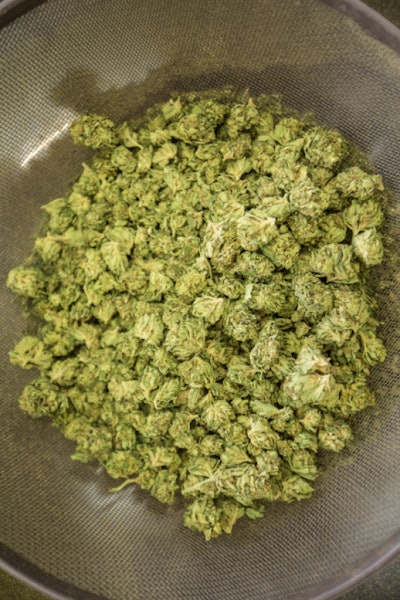
Flynn: You mentioned you find greenhouses preferable in some ways. Will you expand on that?
Walser: Since we’re limited [by the state LCB] in canopy size, you can get so much more out of greenhouses, because you can ... get multiple crops. … Economically, it makes a lot of sense. You also have control. With outdoor, we get a little weather risk in the fall, as we're going into harvest, and if we get a particularly rainy year, you can have some problems. You eliminate that with a greenhouse, because if you've got controls in there, you can keep the humidity right.
Flynn: What have you found to be suitable or ideal nutrients and soil amendments? Do particular strains have different needs?
Walser: We see a little difference strain to strain. But, generally, they all pretty much need the same thing — NPK [nitrogen, phosphorous and potassium], certain micronutrients — calcium's a big one they like to have, particularly when they get into flowering.
Soils is one of the biggest controversies on our farm, and we've had massive arguments between my grow team and myself and my partner, because I've got one idea about organic soil, and they have a really different one. It's a continuing discussion.
But we mix our own soils at Buddy Boy Farm. We bring in peat and all the different ingredients. I brought … that in anyway, because I normally use soft rock, phosphate and fish fertilizer, and a lot of that stuff on my other organic crops. So my soil mix has prevailed, I guess, on the outdoor stuff, and their soil mix seems to be better for the container-grown stuff. So basically we make it according to what we're going to use it for.
Flynn: Will you comment on the incidence of pests on your farm — bugs, or fungi, or mold, or whatever problems might exist, and what measures you take to prevent or suppress them?
Walser: I was an organic gardener. When I became a farmer, I didn't know anything about growing with chemicals, but I did know something about growing organically, so I continued to farm that way.
So we use the same organic techniques for disease and insect control … on cannabis as we do on farming. The rest of our farm is all certified organic and always has been. The cannabis can't be certified organic, but we still abide by those principles. We're not going to put anything on there that we believe might be harmful.
With what we do in the outdoor grows, we never see a mite. We've got such a predator population naturally that mites don't survive.
In the greenhouses, you tend to see a little bit more mite pressure, and I know indoors you always have mite and powdery mildew problems. We use biological for that. I'm trying to talk my grow team into allowing me to use just predatory mites in the greenhouse, but they are very resistant. They just don't believe in them, and it’s an ongoing battle. We'll use Neem for mite control; Actinovate, which is a biological colonizer of the leaf surface, for fungal control, prophylactically.
All of these things are either completely non-toxic or of such low toxicity that they're generally regarded as safe, and they're all OMRI or WSDA organic program listed.
Flynn: Does Buddy Boy Farm plan to supply the medical marijuana market once it is rolled into the recreational market July 1? And what are your expectations for that market?
Walser: Yes. We do. We have a number of CBD strains, and we have one in particular called Amazing Grace, which we think is really amazing — very high CBD, well in the 12 to 14 percent, and almost no THC.
Our expectations? They're not great. I've talked to a number of recreational stores and former medical stores that are being licensed on the recreational side, and they said they never had much luck selling CBD strains — their customers really want the THC, and they hardly carried anything with CBD in it. As more sophisticated products come out, and we have well-tested CBD vape pens, edibles and capsules, that may change, but my guess is it's not going to be a huge market. But I'd love to be surprised.
Flynn: What do you see as some keys to success for producers/processors, realizing, of course, that few or none of us have 40 years of organic farming experience like you?
Walser: I'd say detailed planning for the things you can know about. Not going too far in debt. Given an unknown market, it's hard to make solid projections.
I visit with a lot of people, and they tended to have stars in their eyes about what this was going to be. Everybody thought it was the green rush, as they like to call it. As we've all found, it has been in some sectors. Many retailers are doing pretty well, some not so well. For producers and processors, it's a dogfight out there, so it's not a green rush by any means.
You've just got to have an attention to detail, and follow up on it by watching everything you do and where you spend your money.
The other thing is just to ask a lot of questions. Visit with people who are already doing it, because there's a vast difference between growing it in your closet ... and growing 30,000 square feet. The way you do it and how well you do it has a big impact on whether you're going to stay in business or not.
Try to gain some knowledge of sales and marketing. That's a tough one that a lot of people don't really have. Read up on it. Study. Those are the things I think are important right now.
About This Issue’s ‘Guest Interviewer’: Eugene Flynn is managing member (with Dana Michie) of Canna Herb Farms LLC, a Tier-2 producer in Stevens County, Eastern Washington. Canna Herb Farms is a predominantly outdoor grow that uses a variety of natural and organic techniques in its soil-grown cannabis cultivation. Flynn is a retired international lawyer, who worked for major firms in New York, Los Angeles and San Francisco. He also spent more than 20 years in Asia assisting clients from around the world in cross-border business transactions and direct foreign investments. Flynn handles compliance and business development for Canna Herb Farms, while Michie, a long-time medical cannabis grower, is the Grow Master and technical expert behind the company.

